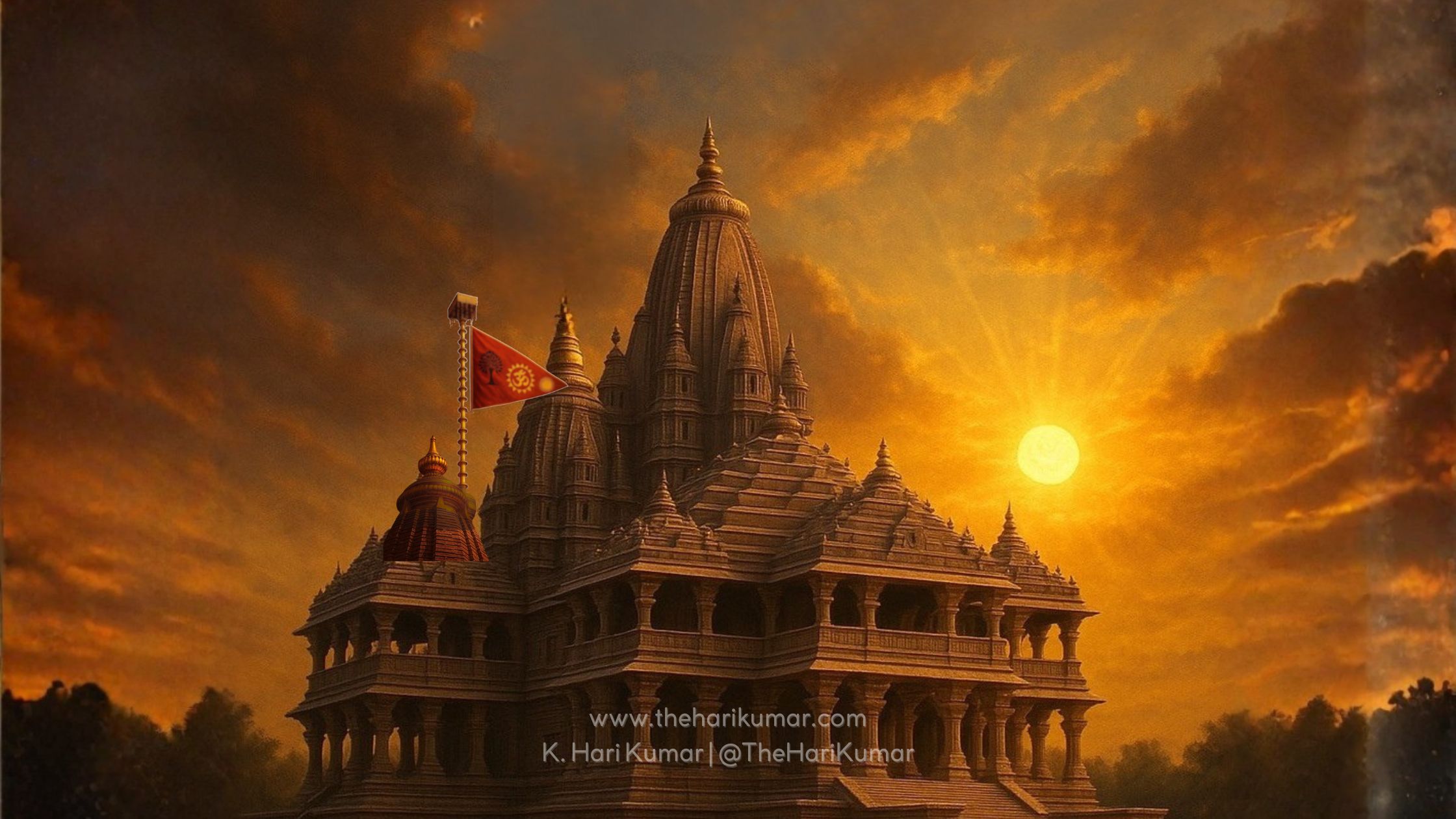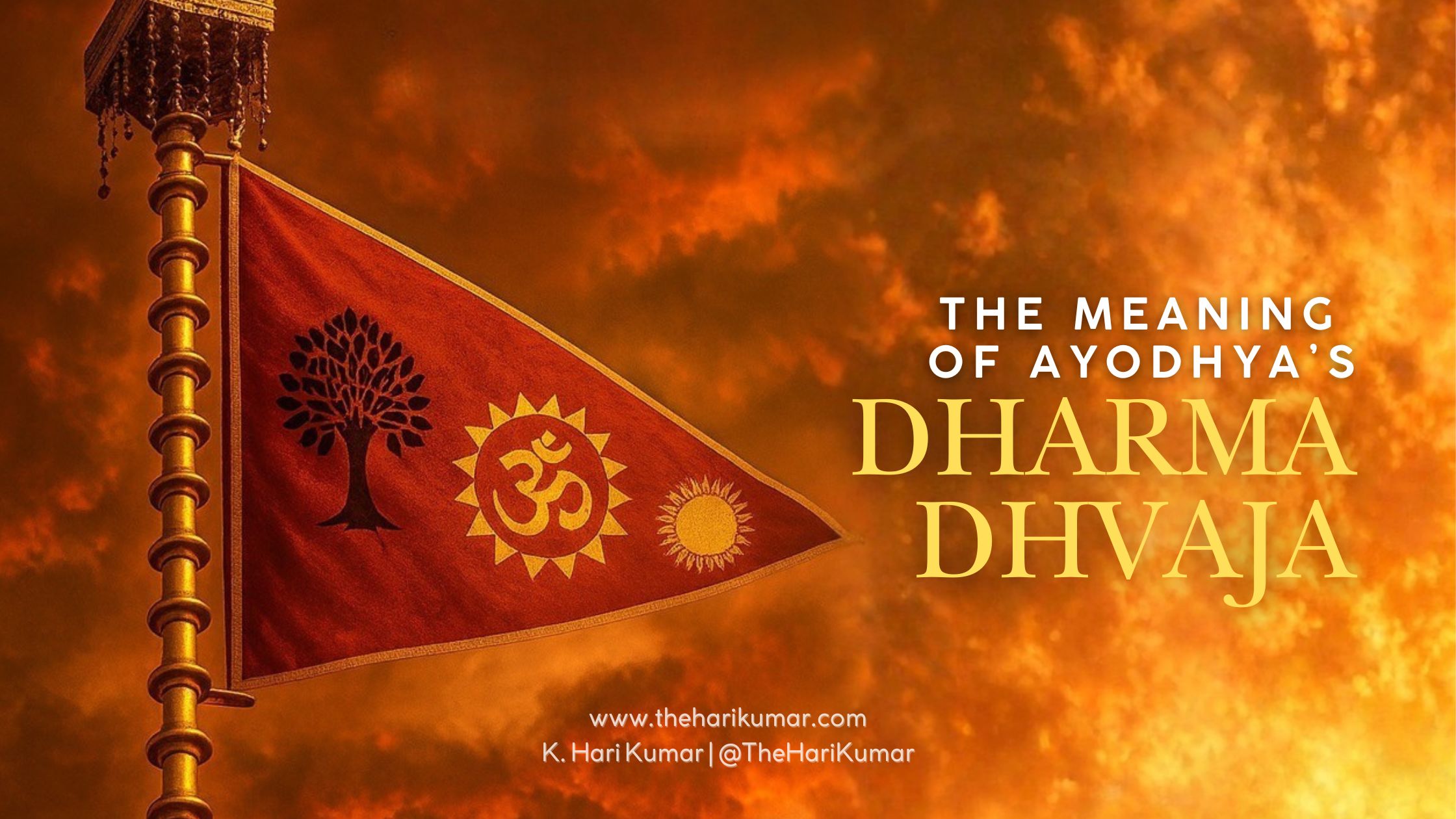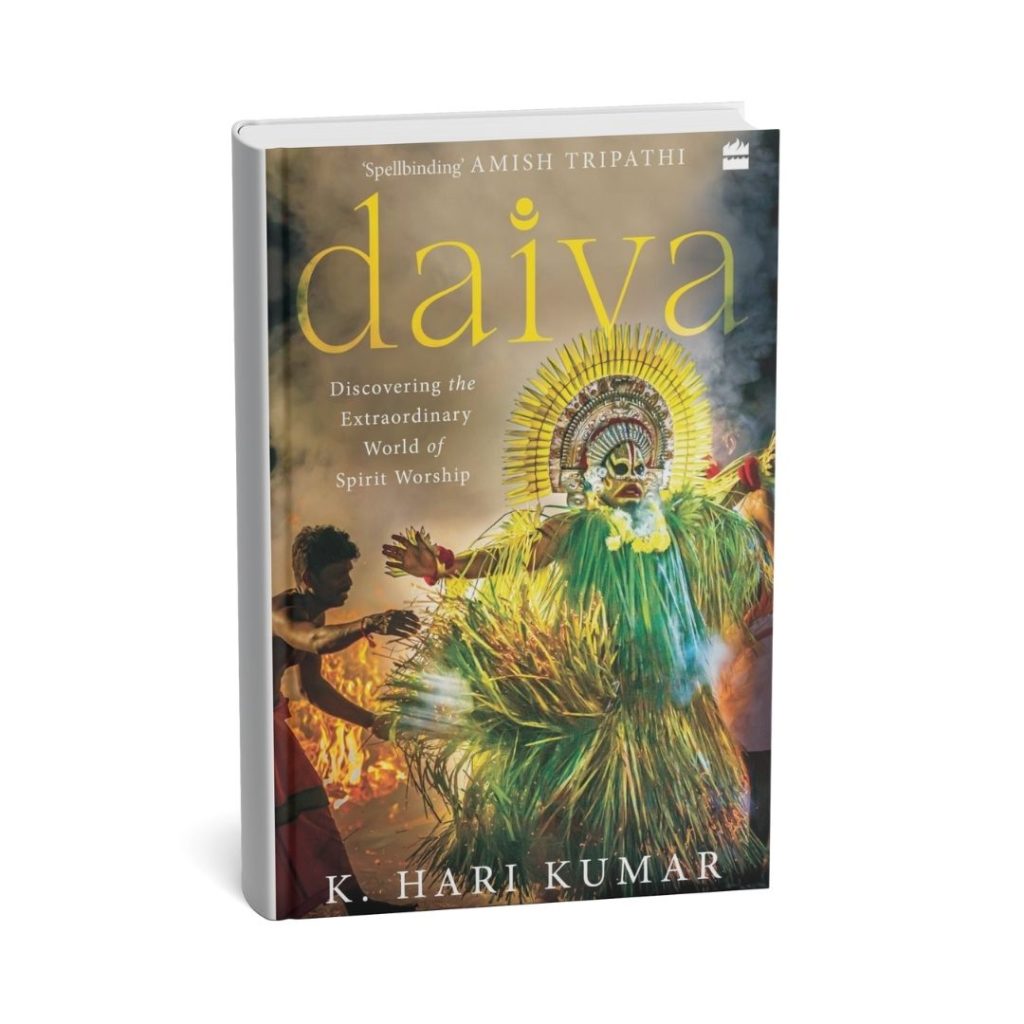The hoisting of the Dharma Dhvaja is one of the most powerful visual declarations in Santana Hindu tradition. More than a ritual, it is a proclamation — a flag rising into the sky to announce the presence, protection, and victory of dharma, the cosmic law that sustains the universe. Today, as the Dharma Dhvaja was raised by Prime Minister Narendra Modi at the Ayodhyā Rāma Mandir, the moment resonated with Rāma’s timeless ideals: justice, balance, and moral clarity.
What Is the Dharma Dhvaja?
The term Dharma Dhvaja comes from two Sanskrit words:
• dharma (धर्म) — the righteous moral order, the principle of truth, duty, and harmony.
• dhvaja (ध्वज) — a flag, banner, or standard.
Together, Dharma Dhvaja simply means the banner that upholds and proclaims dharma. In temple architecture, it stands as a symbol of divine authority, spiritual protection, and the active presence of sacred energy.
The Significance of Dhwajarohanam
In Hindu temples, dhwajarohanam — the act of raising the flag — marks the beginning of sacred observances, festivals, and major rituals. The dhvaja signals that the temple is spiritually “awake,” and that the vibration of the deity is present and accessible to devotees.
The dhvajasthambam, the towering flagpole at the entrance of a temple, is believed to act like a spiritual antenna, connecting earth and sky. It channels auspicious energy into the temple precinct and shields the sanctum from negative forces. For centuries, temple flags have carried colours, symbols, and emblems chosen to represent the deity and the philosophical ideals associated with the shrine.
The Historic Dharma Dhvaja at Ayodhyā
The raising of the Dharma Dhvaja at the newly consecrated Ayodhyā Rāma Mandir was more than a ceremonial act; it was a moment soaked in cultural memory and civilisational continuity. The flag fluttering above the shikhara reflects Rāma’s legacy — the unwavering commitment to righteousness, fairness, and the courage to act according to truth.

The Three Sacred Symbols on the Dharma Dhvaja
The Dharma Dhvaja bears three powerful emblems, each carrying a deep spiritual resonance:
Ōm (ॐ)
The primordial sound, the vibration from which the cosmos unfolds. Ōm represents creation, consciousness, and the unbroken thread connecting all living beings.
Sūrya (The Sun)
The sun symbol stands for satya (truth), clarity, energy, and the triumph of light over darkness. It signifies the inner radiance that guides human action toward righteousness.
Kovidāra Tree
The Kovidāra, believed to be a hybrid created by Ṛṣi Kaśyapa from the Mandāra and Pārijāta trees, represents renewal, resilience, and unity in diversity. Its presence on the flag is a reminder that diverse roots can still bloom into shared purpose — the very essence of dharma.
Why the Dharma Dhvaja Matters Today
In an era defined by division and noise, the Dharma Dhvaja rises as a symbol of alignment — a reminder that dharma isn’t merely an ancient idea but a living principle. It calls us to clarity, compassion, accountability, and an unwavering pursuit of truth.
A flag may flutter in the wind, but the values it carries must remain steady.
For more fascinating insights into our culture, you may subscribe to my Youtube Channel, Chaturya the Fourth State: www.youtube.com/@theharikumar




Leave a Reply